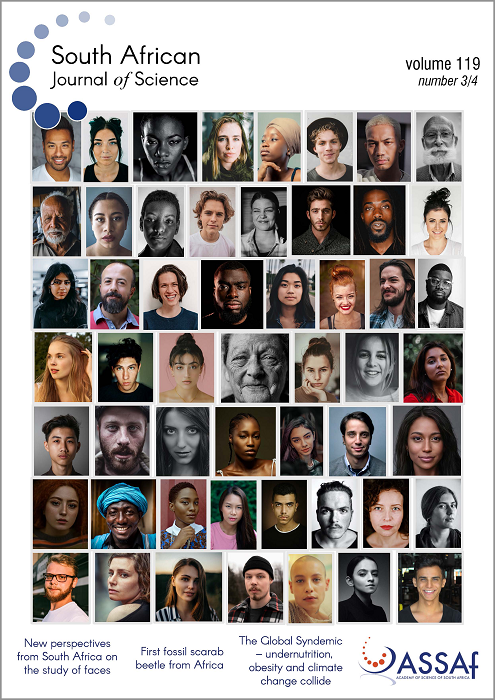Advancing ecosystem accounting in estuaries: Swartkops Estuary case study
DOI:
https://doi.org/10.17159/sajs.2023/14303Keywords:
estuary-level, extent and condition accounts, pressure accounts, physical ecosystem service accounts, managementAbstract
Rapid degradation of ecosystems and loss of ecosystem services have sparked interest in developing approaches to report and integrate such change with socio-economic information systems, such as the System of National Accounts. Here we describe an approach and application of ecosystem accounting for individual estuaries, building on approaches previously applied at national and bay levels. Using the Swartkops Estuary as a case study, the focus is on physical accounts for ecosystem extent and condition, as well as accounts for two important ecosystem services (carbon sequestration and recreational use). Pressure accounts are also introduced to demonstrate the value of identifying key areas for management and restoration interventions in response to changes in extent and/or condition accounts. Greater resolution in these account reports, achieved through zoning, provides spatially explicit information on ecosystem assets and their services within an estuary to also inform management decision-making at local level. Further, these accounts can also inform local restoration prioritisation, in support of the UN Decade on Ecosystem Restoration (2021–2030), for example offsetting irreversibly degraded areas in one zone with restoration or maintenance of similar habitats in another.
Significance:
- This study is the first to apply the ecosystem accounting approach at the individual estuary level.
- We provide spatially explicit information on ecosystem assets and their services in support of resource management.
- Physical accounts include extent and condition, as well as ecosystem service and pressure accounts.
- These accounts inform estuary management and restoration at the local governance level.
Published
Issue
Section
License

All articles are published under a Creative Commons Attribution 4.0 International Licence
Copyright is retained by the authors. Readers are welcome to reproduce, share and adapt the content without permission provided the source is attributed.
Disclaimer: The publisher and editors accept no responsibility for statements made by the authors
How to Cite
- Abstract 533
- PDF 964
- EPUB 448
- XML 216












.png)